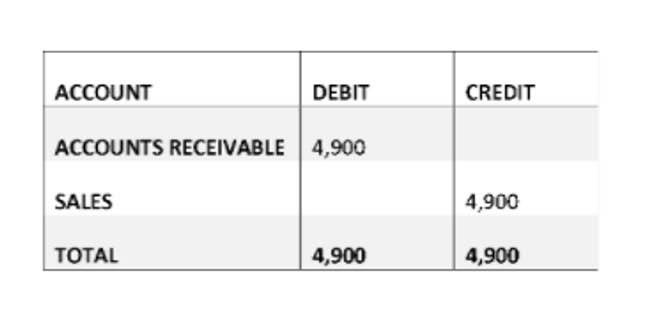
Retaining earnings by a company increases the company’s shareholder equity, which increases the value of each shareholder’s shareholding. This increases the share price, which may result in a capital gains tax liability when the shares are disposed of. You must adjust your retained earnings account whenever you create a journal entry that raises or lowers a revenue or expense account. Because retained earnings what are retained earnings are cumulative, you will need to use -$8,000 as your beginning retained earnings for the next accounting period.
- Even repaying debt affects the company’s accounts by saving future interest payments, making it part of retained earnings.
- Retained earnings is the cumulative amount of earnings since the corporation was formed minus the cumulative amount of dividends that were declared.
- The other owners have the combined remaining 99% ownership interest.
- To calculate RE, the beginning RE balance is added to the net income or reduced by a net loss and then dividend payouts are subtracted.
- A balance sheet example showing retained earnings is provided below.
- All of the characteristics of each preferred stock issue are contained in a document called an indenture.
Is retained earnings a debit or credit?

Long-term liabilities, or non-current liabilities, are typically mortgages or loans used to purchase or maintain fixed assets, and are paid off in years instead of months. Liabilities are the debts, or financial obligations of a business – the money the business owes to others. Liabilities are classified as current liabilities or long-term liabilities. Prior year adjustment is the accounting entry that company record to correct the previous year’s transactions. When a company makes a profit at the end of its financial year, its shareholders may decide to allocate part of the profits to retained earnings.
- If we want to adjust the prior year’s income or expense, we have to adjust with retained earning account instead.
- A business entity can have a negative retained earnings balance if it has been incurring net losses or distributing more dividends than what is there in the retained earnings account over the years.
- Alternatively, the company paying large dividends that exceed the other figures can also lead to the retained earnings going negative.
- Managing retained earnings depends on many factors, including management’s plans for the business, shareholder expectations, the business stage, and expectations about future market conditions.
- For example, the most successful brand names and logos of a consumer products company may have been developed in-house.
- When a company consistently retains part of its earnings and demonstrates a history of profitability, it’s a good indicator of financial health and growth potential.
How to calculate RAN? A practical example
Retained earnings is the cumulative amount of earnings since the corporation was formed minus the cumulative amount of dividends that were declared. Retained earnings is the corporation’s past earnings that have not been distributed as dividends to its stockholders. This formula highlights the dynamic nature of retained earnings, which fluctuate based on the company’s profitability and dividend policy.
What Is Included in Stockholders’ Equity?

If a company decides not to pay dividends, and instead keeps all of its profits for internal use, then the retained earnings balance increases by the full amount of net income, also called net profit. Stock dividends have no effect on the cash account, but reduce retained earnings and increase the common stock account. Investors will not find a separate balance sheet account for dividends that have been paid. However, after the dividend declaration and before the actual payment, the company records a liability to its shareholders in the dividend payable account. When a company issues a dividend to its shareholders, the dividend can be paid either in cash or in additional shares of stock. The two types of dividends affect a company’s balance sheet in different ways.
Where Is Retained Earnings on a Balance Sheet?
- After all, shareholders are the ones who are entitled to dividends and hold equity in the company.
- Since this balance is a type of equity, it also acts similar to other equity balances.
- Notice that it is reported separately from retained earnings and separately from paid-in capital.
- During the year the company incurred a net loss of $120,000 after deducting all the expenses.
Observing it over a period of time (for example, over five years) only indicates the trend of how much money a company is adding to retained earnings. It involves paying out a nominal amount of dividends and retaining a good portion retained earnings on balance sheet of the earnings, which offers a win-win. Similarly, assets in accounting are resources owned or controlled by a company. These resources result in an inflow of economic benefits in the future. In this case, some people may confuse retained earnings for liabilities. However, this balance does not meet the definition for any of those items.

A Canadian manufacturing company, ABC Corp, has accumulated significant retained earnings over the years. However, due to a recent downturn in the industry, the company’s liabilities have increased, and its asset base has shrunk. Before declaring a dividend, ABC Corp must conduct a solvency test. The test reveals that paying the proposed dividend would leave the company unable to meet its short-term obligations. As a result, the board decides to retain the earnings to strengthen the company’s financial position, demonstrating the impact of legal restrictions. It reconciles the beginning balance of net income or loss for the period, subtracts dividends paid to shareholders and provides the ending balance of retained earnings.
- If you’re an investor, you’d want to know more than just how much they’ve saved.
- In contrast, when a company suffers a net loss or pays dividends, the retained earnings account is debited, reducing the balance.
- Yes, retained earnings can be used to pay dividends to shareholders.
- We’ll pair you with a bookkeeper to calculate your retained earnings for you so you’ll always be able to see where you’re at.
- This number is then compared to the retained earnings number on your general ledger.
- Use a retained earnings formula to track how much your business has accumulated.
Higher income taxpayers could “park” income inside a private company instead of being paid out as a dividend and then taxed at the individual rates. To remove this tax benefit, some jurisdictions impose an “undistributed profits tax” on retained earnings of private companies, usually at the highest individual marginal tax rate. When total assets are greater than total liabilities, stockholders have a positive equity (positive book value). Conversely, when total liabilities are greater than total assets, stockholders have a negative stockholders’ equity (negative book value) — also sometimes called stockholders’ deficit. This means that the value of the assets of the company must rise above its liabilities before the stockholders hold positive equity value in the company. Once your cost of Suspense Account goods sold, expenses, and any liabilities are covered, you have to pay out cash dividends to shareholders.